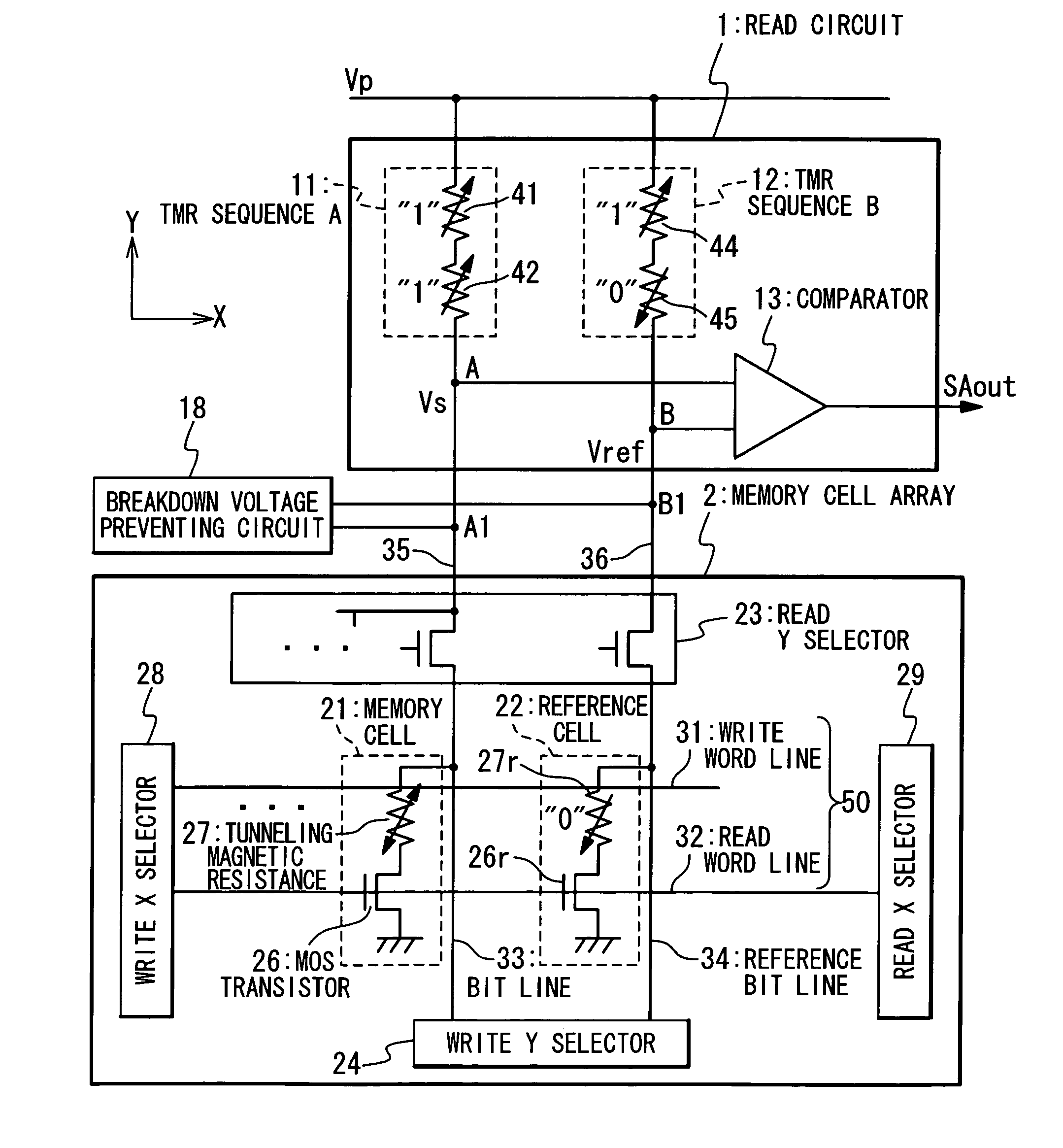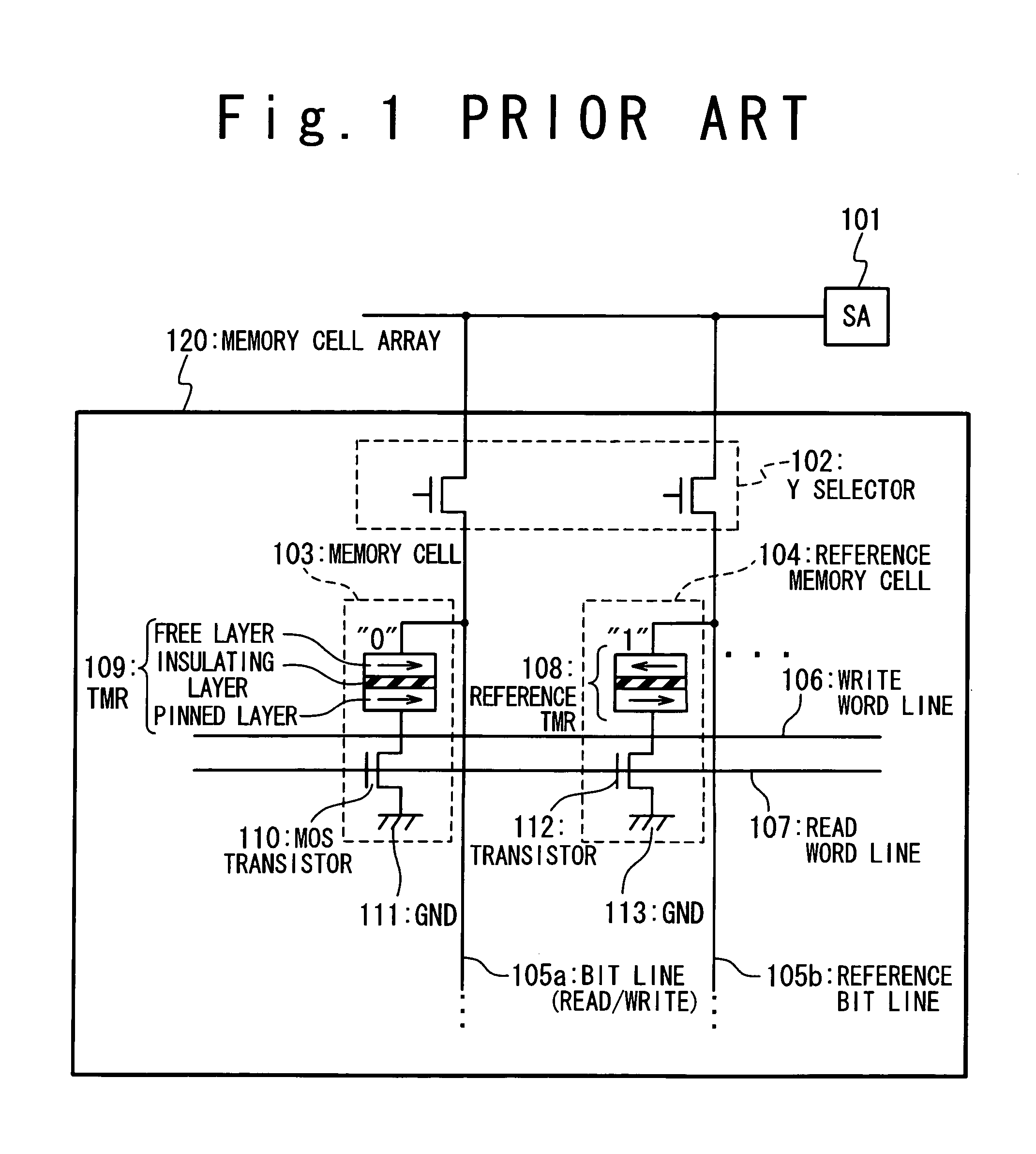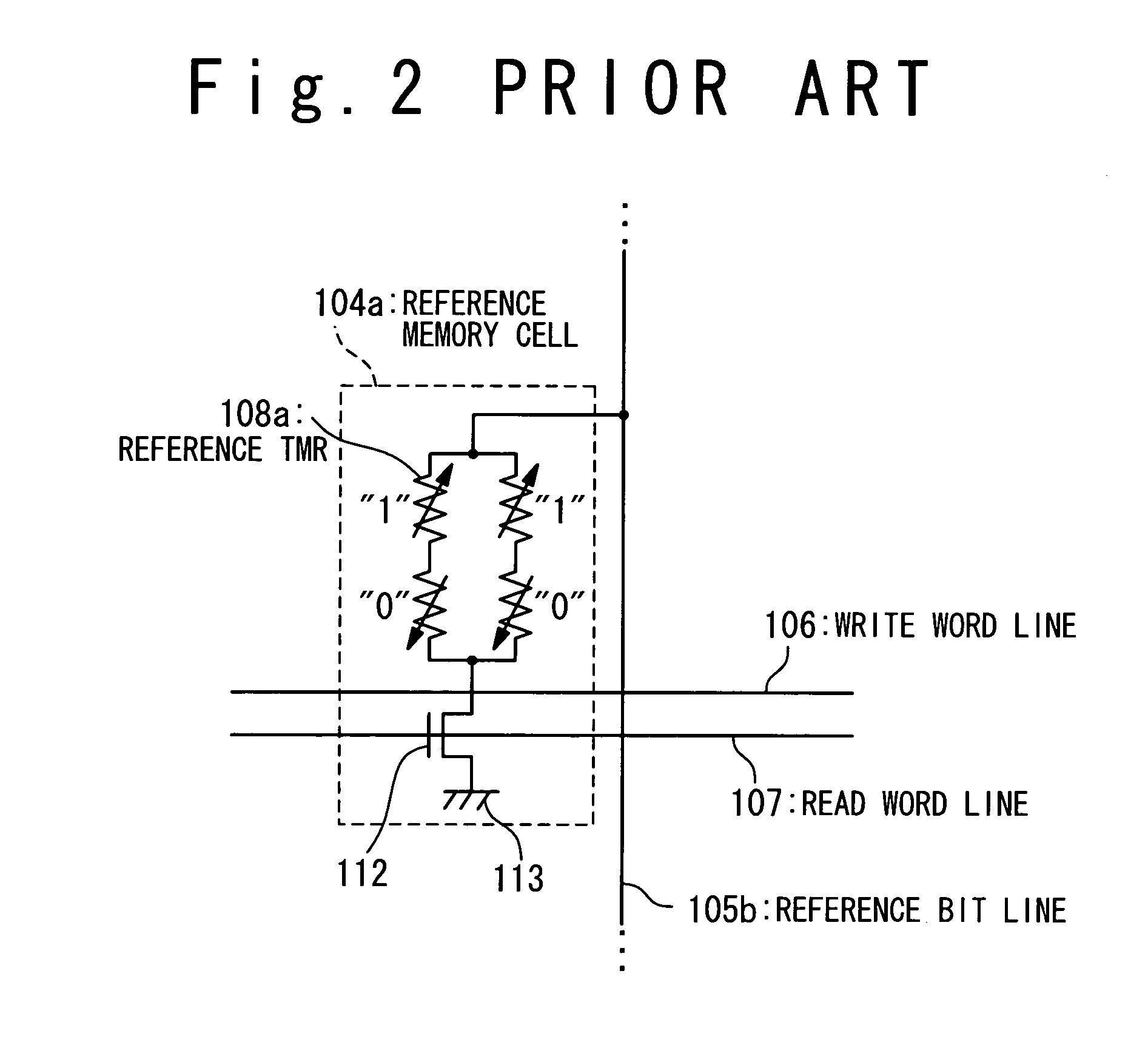Magnetic random access memory with improved data reading method
a random access and data technology, applied in the field of magnetic random access memory, can solve the problem of greatly impaired reliability of read operation, and achieve the effect of high reliability
- Summary
- Abstract
- Description
- Claims
- Application Information
AI Technical Summary
Benefits of technology
Problems solved by technology
Method used
Image
Examples
first embodiment
[0071]First, the configuration of the magnetic random access memory according to the first embodiment of the present invention will be described below.
[0072]FIG. 4 is a block diagram showing the magnetic random access memory according to the first embodiment of the present invention. The magnetic random access memory includes a read circuit 1, a memory cell array 2, and a breakdown voltage preventing circuit 18.
[0073]The memory cell array 2 stores data in a nonvolatile state by a memory cell 21 having a spontaneous magnetization whose direction can be freely reversed. The memory cell array 2 includes a plurality of memory cells 21, a plurality of reference cells (reference memory cells) 22, a plurality of bit lines 33, a reference bit line 34, a plurality of pairs of word lines 50, a read Y selector 23, a write Y selector 24, a write X selector 28, and a read X selector 29.
[0074]The bit lines 33 extend in Y direction as a first direction. One end of the bit line 33 is connected to t...
second embodiment
[0107]Next, the magnetic random access memory according to the second embodiment of the present invention will be described below.
[0108]First, the configuration of the magnetic random access memory according to the second embodiment of the present invention will be described below.
[0109]FIG. 9 is a block diagram of the magnetic random access memory according to the second embodiment of the present invention. This embodiment is different from the first embodiment (FIG. 4) in that the TMR sequence A 11 is changed to a TMR sequence C 11a and data of “1” is always stored in the reference cell 22. The TMR sequence C 11a always stores the data of “0”, showing that a TMR is kept in a parallel state in each of the tunneling magnetic resistances 41 and 42. A TMR sequence B 12a is the same as the TMR sequence B 12 and other components in FIG. 9 are the same as those of the first embodiment (FIG. 4). Therefore, their description is omitted.
[0110]Because the operation of the magnetic random acc...
third embodiment
[0114]Next, the magnetic random access memory according to the third embodiment of the present invention will be described below.
[0115]First, the configuration of the magnetic random access memory according to the third embodiment of the present invention will be described.
[0116]FIG. 11 is a block diagram showing the configuration of the magnetic random access memory according to the third embodiment of the present invention. The configuration is different from the configuration shown in FIG. 4 in the following point in a read circuit 1b. That is, a plurality of sets are present, in each of which a TMR sequence A 11-i (i=1−n: natural number) and a switch 14-i (i=1−n: natural number) are connected in series. The plurality of sets are connected each other in parallel. Moreover, one end of each of the plurality of sets is connected to the wiring 35 and the other end of it is connected to the first power supply (Vp). Similarly, the plurality of sets are present in each of which a TMR se...
PUM
 Login to View More
Login to View More Abstract
Description
Claims
Application Information
 Login to View More
Login to View More - R&D
- Intellectual Property
- Life Sciences
- Materials
- Tech Scout
- Unparalleled Data Quality
- Higher Quality Content
- 60% Fewer Hallucinations
Browse by: Latest US Patents, China's latest patents, Technical Efficacy Thesaurus, Application Domain, Technology Topic, Popular Technical Reports.
© 2025 PatSnap. All rights reserved.Legal|Privacy policy|Modern Slavery Act Transparency Statement|Sitemap|About US| Contact US: help@patsnap.com



